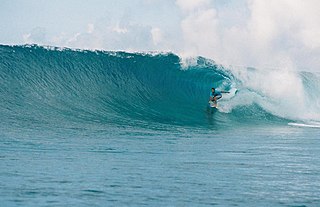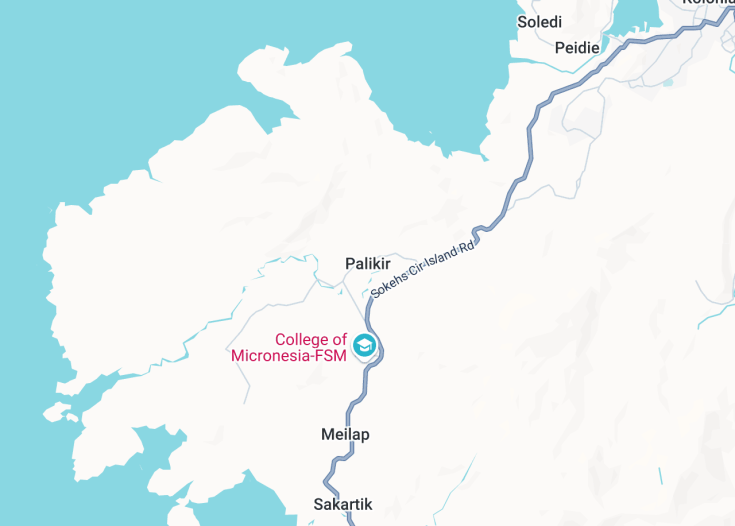Palikir, the capital of the Federated States of Micronesia, is a hidden gem nestled on the island of Pohnpei. Renowned for its lush landscapes and rich cultural heritage, Palikir represents a unique blend of tranquility and governmental hustle. As the seat of the nation’s government, it offers a unique insight into the political workings of Micronesia, set against a backdrop of tropical beauty. Visitors can explore dense rainforests, climb soaring peaks, and discover ancient ruins, all within close proximity to modern amenities.
Ensure to pack versatile clothing suitable for both hikes in the rainforest and visits to governmental buildings, reflecting respect for local customs and conditions.
Plan your visit during the dry season, from November to April, to enjoy outdoor activities and explore historical sites in more comfortable weather conditions.
Top things to do & see in Palikir
Select the following sights and activities to discover best tickets and tours available in Palikir.
Palikir: The Administrative Heart of Micronesia
| Country | Micronesia |
| Time in Palikir | GMT+11 |
| Language spoken | English |
| Population | 7,000 (World Population Review) |
| Currency | United States Dollar (USD $) |
| Airports |
|
Positioned in the Pacific Ocean, Palikir serves as the capital of the Federated States of Micronesia. Established as the capital in 1989, Palikir is much quieter and less developed compared to other global capitals, reflecting the peace and simplicity of Micronesian culture. Despite its modest size, Palikir plays a vital national role, housing government institutions and administrative offices. This locale is steeped in both historic and modern significance. From the remnants of ancient societies to contemporary political movements, Palikir is a central point for understanding the broader political and cultural narratives of Micronesia.
The architecture in Palikir is a blend of traditional Micronesian styles and modern governmental buildings, testament to its post-colonial evolution. A highlight for visitors is the nearby Nan Madol, a UNESCO World Heritage site, considered the ‘Venice of the Pacific’. Interestingly, despite its political stature, life here runs at a leisurely pace, heavily influenced by local traditions and the natural surroundings.
Palikir’s significance extends beyond bureaucracy. It serves as an educational hub in Micronesia, with facilities such as the College of Micronesia influencing educational development in the region. The town also acts as a focal point for discussing and addressing regional environmental challenges, essential for an island nation vulnerable to climate change.
This small capital’s understated yet potent influence makes it an essential point of interest for anyone looking to understand more about Micronesian governance, culture, and its role in the Pacific. Palikir offers insights into the resilience and adaptability of small island communities in maintaining their cultural identity while navigating the complexities of globalization.
Where is Palikir?
Palikir is located on the island of Pohnpei, part of the Federated States of Micronesia in the Pacific Ocean.
What is Palikir famous for?
Palikir is famous for being the seat of government of the Federated States of Micronesia. It is known for its tranquil, lush landscapes and traditional Micronesian culture juxtaposed with modern governmental structures.
History
Pre-Colonial Period
Palikir, now the capital of the Federated States of Micronesia, has a layered history that reaches far back into the pre-colonial period. The earliest inhabitants were likely Austronesian people who arrived by sea thousands of years ago, developing isolated communities adept at fishing and subsistence agriculture. Their society was largely clan-based, with a rich oral tradition and a belief system deeply connected to the surrounding nature and the sea.
Colonial Intrusions (1525-1899)
European exploration touched Palikir with the arrival of the Portuguese and Spanish in the early sixteenth century. The Spanish formally claimed the islands in 1886. Despite having little direct impact on the daily lives in Palikir itself, the Spanish era marked the beginning of foreign influence in the region.
German and Japanese Rule (1899-1945)
After the Spanish-American War, Spain sold the Caroline Islands, which include Palikir, to Germany in 1899. The German administration introduced copra (dried coconut meat for oil extraction) as a cash crop. Post World War I, the League of Nations mandated the islands to Japan. The Japanese period introduced significant infrastructural developments, though World War II would devastate much of the region.
Post-War Era and Independence (1945-Present)
Following World War II, the islands came under United States administration as part of the Trust Territory of the Pacific Islands. Gradually moving towards self-governance, the Federated States of Micronesia was established in 1979, with Palikir selected as the capital in 1989. Since then, Palikir has matured as a governmental center, balancing modern political roles with its historical and cultural heritage.
Visit Palikir
What to see and do in Palikir, Micronesia.
Visiting Palikir offers a unique glimpse into the governmental heart of Micronesia, mixed with tranquil natural beauty. Key attractions include the Capitol Complex, which offers guided tours showcasing the political heritage of this young nation. Nature enthusiasts can explore nearby hiking trails leading to cascading waterfalls and view the rich biodiversity of the islands at the Pwunso Botanical Garden. For a deep dive into local culture, the Kolonia Town’s traditional markets offer vibrant scenes brimming with local crafts and foods.
- Capitol Complex Tours
- Hiking and Waterfalls
- Pwunso Botanical Garden
- Kolonia Town Markets
Key Events in Palikir
Palikir, though predominantly known for its political significance, hosts several cultural events throughout the year that reflect its rich Micronesian heritage. Notable among these is the Yap Day in early March, which is a celebration of traditional dance, music, and craftsmanship from the Yap islands. There is also the FSM Independence Day on May 10, marked by celebrations and parades across the islands.
Best time to visit Palikir
The best time to visit Palikir is during the dry season from December to April. This period offers the most pleasant weather suitable for exploring outdoor attractions and participating in cultural events without the disruption of the rain.
Is Palikir worth visiting?
Palikir, as the capital of the Federated States of Micronesia, offers a distinctive blend of political history and natural beauty. While it may lack the typical tourist infrastructure, its appeal lies in its untouched landscapes and deep cultural roots. Visitors can experience a side of Micronesia that is pivotal in the nation’s governance yet resonant with the traditions of the past. However, the limited accommodation and dining options might pose challenges for some travelers. Overall, Palikir is ideal for those seeking an off-the-beaten-path experience with a taste for adventure and cultural enrichment.










